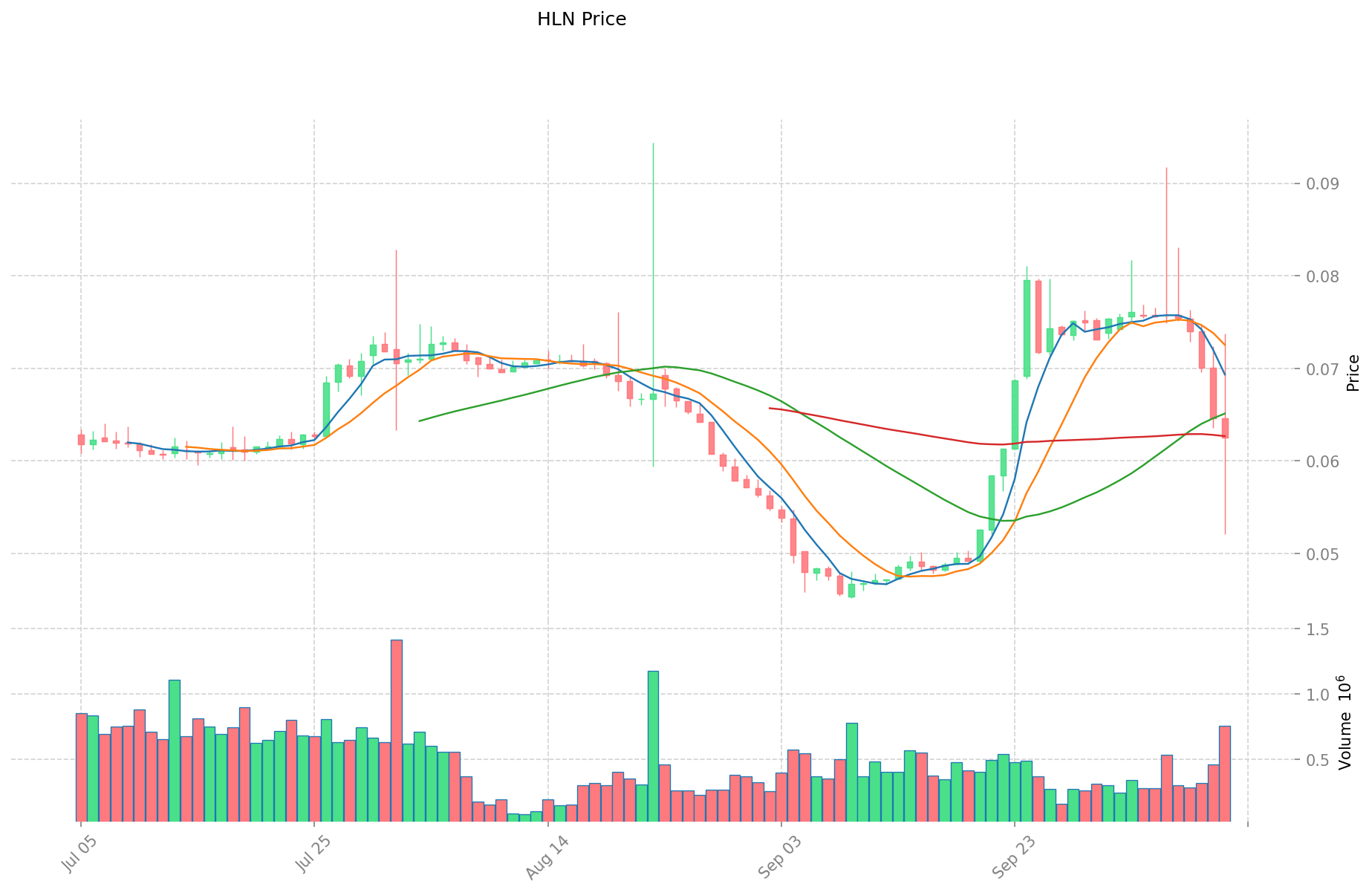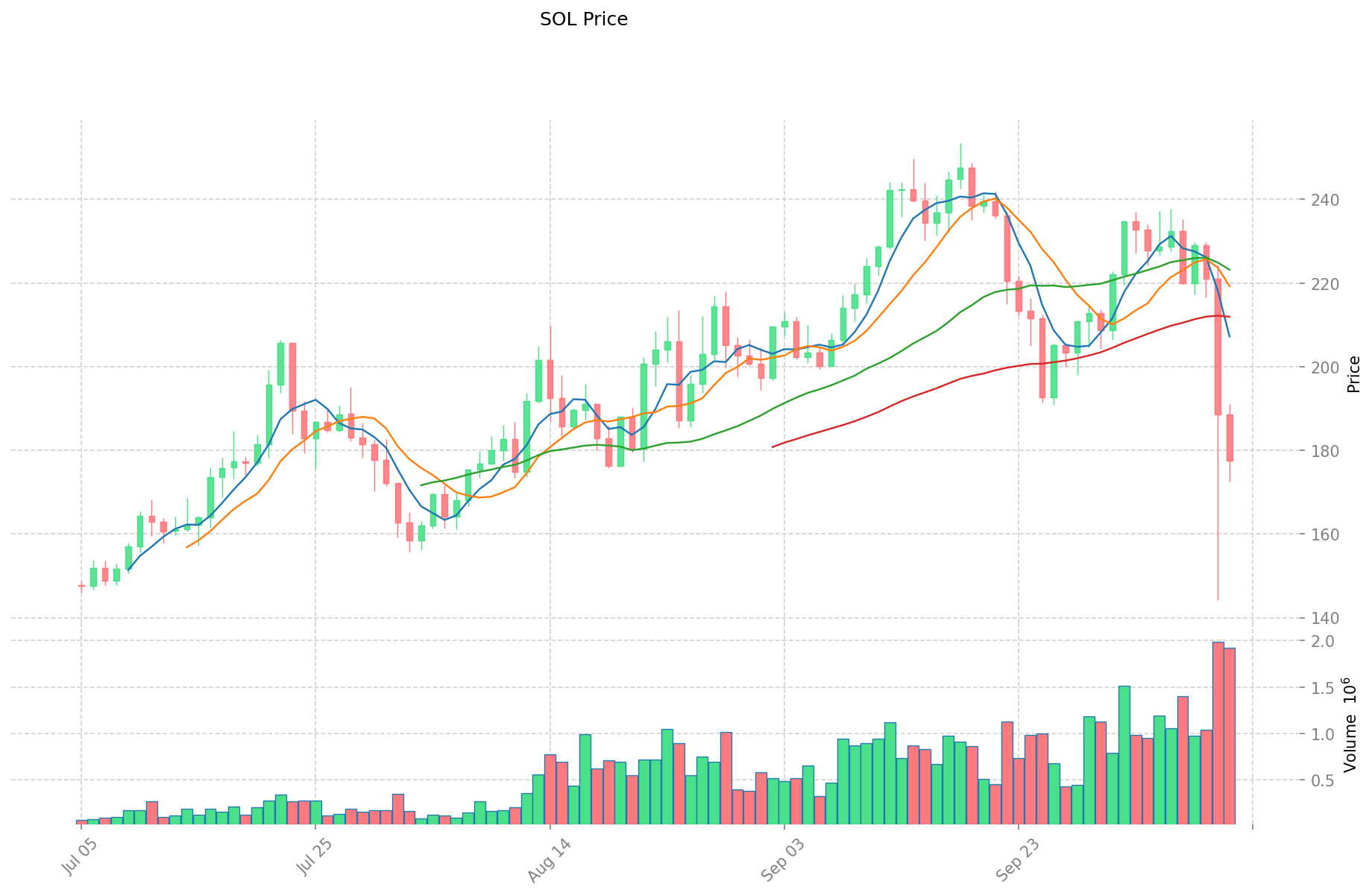HLN vs SOL: A Clash of Titans in the Cryptocurrency Arena
Introduction: HLN vs SOL Investment Comparison
In the cryptocurrency market, the comparison between Enosys Global (HLN) and Solana (SOL) has been an unavoidable topic for investors. The two not only show significant differences in market cap ranking, application scenarios, and price performance but also represent different positioning in the crypto asset landscape.
Enosys Global (HLN): Since its launch, it has gained market recognition for its focus on multichain DeFi solutions and yield aggregation.
Solana (SOL): Introduced in late 2017, it has been hailed as a high-performance blockchain protocol, becoming one of the cryptocurrencies with the highest global trading volume and market capitalization.
This article will provide a comprehensive analysis of the investment value comparison between HLN and SOL, focusing on historical price trends, supply mechanisms, institutional adoption, technological ecosystems, and future predictions, attempting to answer the question investors care about most:
"Which is the better buy right now?" Here is the report section based on the provided template and information:
I. Price History Comparison and Current Market Status
HLN (Coin A) and SOL (Coin B) Historical Price Trends
- 2023: SOL saw significant price increase due to growing adoption of the Solana ecosystem, reaching an all-time high of $293.31 on January 19, 2025.
- 2024: HLN launched and experienced price volatility as a new token in the market.
- Comparative analysis: During the recent market cycle, HLN dropped from its high of $0.56 to a low of $0.01861, while SOL demonstrated more resilience, maintaining a higher price range.
Current Market Situation (2025-10-12)
- HLN current price: $0.06235
- SOL current price: $175.38
- 24-hour trading volume: HLN $47,448.25 vs SOL $343,527,097.22
- Market Sentiment Index (Fear & Greed Index): 24 (Extreme Fear)
Click to view real-time prices:
- View HLN current price Market Price
- View SOL current price Market Price


II. Key Factors Affecting Investment Value of HLN vs SOL
Market Dynamics
- Price Consolidation: Both assets may experience price consolidation in narrow ranges for extended periods, which can test investor patience.
- Investor Psychology: Extended sideways movement can lead to investor fatigue, causing them to exit positions in search of other opportunities.
- Market Manipulation: "Pump and dump" patterns may occur, where prices are artificially elevated before sudden declines.
Technical Analysis Factors
- Price Trends: The direction and strength of price movements serve as critical indicators for investment decisions.
- Trading Volume: Changes in trading activity often signal shifting market sentiment and potential price direction.
- Support/Resistance Levels: Key price points that may trigger buying or selling pressure.
Investment Sentiment
- Market Perception: How the broader market views each asset's utility and future potential.
- Community Engagement: The strength and activity of developer and user communities can influence long-term value.
- Competitive Positioning: How HLN and SOL position themselves against other cryptocurrencies in their respective niches.
Capital Flow Indicators
- Institutional Interest: The level of professional investment activity can signal legitimacy and potential growth.
- Liquidity Patterns: Depth of order books and ease of trading without significant price impact.
- Whale Activity: Large holder behavior often precedes significant market movements.
III. 2025-2030 Price Prediction: HLN vs SOL
Short-term Prediction (2025)
- HLN: Conservative $0.056142 - $0.06238 | Optimistic $0.06238 - $0.0910748
- SOL: Conservative $111.1383 - $176.41 | Optimistic $176.41 - $222.2766
Mid-term Prediction (2027)
- HLN may enter a growth phase, with an estimated price range of $0.08098960707 - $0.11408213469
- SOL may enter a consolidation phase, with an estimated price range of $152.13880656 - $240.88644372
- Key drivers: Institutional capital inflow, ETF, ecosystem development
Long-term Prediction (2030)
- HLN: Base scenario $0.110904576254231 - $0.119252232531432 | Optimistic scenario $0.119252232531432 - $0.138332589736461
- SOL: Base scenario $248.1688423910618 - $261.230360411644 | Optimistic scenario $261.230360411644 - $305.63952168162348
Disclaimer: This analysis is based on historical data and market projections. Cryptocurrency markets are highly volatile and unpredictable. This information should not be considered as financial advice. Always conduct your own research before making investment decisions.
HLN:
| 年份 | 预测最高价 | 预测平均价格 | 预测最低价 | 涨跌幅 |
|---|---|---|---|---|
| 2025 | 0.0910748 | 0.06238 | 0.056142 | 0 |
| 2026 | 0.097443798 | 0.0767274 | 0.043734618 | 23 |
| 2027 | 0.11408213469 | 0.087085599 | 0.08098960707 | 39 |
| 2028 | 0.1086305761926 | 0.100583866845 | 0.07543790013375 | 61 |
| 2029 | 0.133897243544064 | 0.1046072215188 | 0.072178982847972 | 67 |
| 2030 | 0.138332589736461 | 0.119252232531432 | 0.110904576254231 | 91 |
SOL:
| 年份 | 预测最高价 | 预测平均价格 | 预测最低价 | 涨跌幅 |
|---|---|---|---|---|
| 2025 | 222.2766 | 176.41 | 111.1383 | 0 |
| 2026 | 223.264496 | 199.3433 | 173.428671 | 13 |
| 2027 | 240.88644372 | 211.303898 | 152.13880656 | 20 |
| 2028 | 266.7923016148 | 226.09517086 | 162.7885230192 | 28 |
| 2029 | 276.016984585888 | 246.4437362374 | 211.941613164164 | 40 |
| 2030 | 305.63952168162348 | 261.230360411644 | 248.1688423910618 | 48 |
IV. Investment Strategy Comparison: HLN vs SOL
Long-term vs Short-term Investment Strategies
- HLN: Suitable for investors focused on multi-chain DeFi solutions and yield aggregation potential
- SOL: Suitable for investors seeking high-performance blockchain protocols with established ecosystems
Risk Management and Asset Allocation
- Conservative investors: HLN: 20% vs SOL: 80%
- Aggressive investors: HLN: 40% vs SOL: 60%
- Hedging tools: Stablecoin allocation, options, cross-currency portfolios
V. Potential Risk Comparison
Market Risks
- HLN: Higher volatility as a newer asset, potentially lower liquidity
- SOL: Increased competition from other high-performance blockchains
Technical Risks
- HLN: Scalability, network stability
- SOL: Centralization concerns, potential security vulnerabilities
Regulatory Risks
- Global regulatory policies may have differing impacts on both assets
VI. Conclusion: Which Is the Better Buy?
📌 Investment Value Summary:
- HLN advantages: Focus on multi-chain DeFi solutions, potential for higher growth as a newer asset
- SOL advantages: Established ecosystem, higher market cap, proven performance
✅ Investment Advice:
- New investors: Consider allocating a larger portion to SOL due to its established market position
- Experienced investors: Balanced approach with both assets, adjusting based on risk tolerance
- Institutional investors: Evaluate SOL for larger allocations, monitor HLN for potential growth opportunities
⚠️ Risk Warning: The cryptocurrency market is highly volatile. This article does not constitute investment advice. None
VII. FAQ
Q1: What are the main differences between HLN and SOL? A: HLN focuses on multichain DeFi solutions and yield aggregation, while SOL is a high-performance blockchain protocol with a more established ecosystem. SOL has a higher market cap and trading volume, whereas HLN is a newer asset with potential for higher growth.
Q2: Which coin has shown better price performance recently? A: SOL has demonstrated more resilience in recent market cycles, maintaining a higher price range. In 2023, SOL reached an all-time high of $293.31, while HLN, as a newer token, has experienced more price volatility.
Q3: What are the key factors affecting the investment value of HLN and SOL? A: Key factors include market dynamics (price consolidation, investor psychology), technical analysis factors (price trends, trading volume), investment sentiment (market perception, community engagement), and capital flow indicators (institutional interest, liquidity patterns).
Q4: What are the price predictions for HLN and SOL in 2030? A: For HLN, the base scenario predicts a range of $0.110904576254231 - $0.119252232531432, with an optimistic scenario of $0.119252232531432 - $0.138332589736461. For SOL, the base scenario predicts $248.1688423910618 - $261.230360411644, with an optimistic scenario of $261.230360411644 - $305.63952168162348.
Q5: How should investors allocate their portfolio between HLN and SOL? A: Conservative investors might consider allocating 20% to HLN and 80% to SOL, while aggressive investors might opt for 40% HLN and 60% SOL. New investors may want to allocate a larger portion to SOL due to its established market position.
Q6: What are the main risks associated with investing in HLN and SOL? A: For HLN, risks include higher volatility, lower liquidity, and technical challenges like scalability. For SOL, risks include increased competition from other high-performance blockchains, centralization concerns, and potential security vulnerabilities. Both face regulatory risks due to evolving global policies.
Q7: Which coin is considered the better buy? A: The better buy depends on individual investment goals and risk tolerance. SOL may be more suitable for new investors due to its established ecosystem, while experienced investors might consider a balanced approach with both assets. Institutional investors may favor SOL for larger allocations while monitoring HLN for growth opportunities.
Share
Content